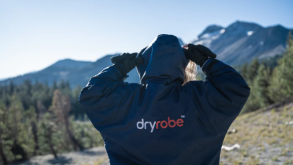Much of the discussion in the Sports and Entertainment—The Intersection of the First Amendment, the Lanham Act and State Rights of Publicity session focused on the transformative use test, which was created by Comedy III Productions v Gary Saderup in 2001. This was a right of publicity dispute over an artist’s use of the image of the Three Stooges on t-shirts. The test said when a work contains significant transformative elements it is worthy of First Amendment protection and also less likely to interfere with the economic interest protected by the right of publicity.
Courts have been grappling with the question of whether a work is significantly transformative ever since. In Winter v DC Comics in 2003, two Texan musician brothers claimed that two characters in the Jonah Hex comics were based on them. The characters were singing Wild West cowboys who battled worm-like creatures from below the surface of the earth. The California Supreme Court found the use to be transformative.
In Kirby v Sega in California in 2006, the lead singer of Deee-light claimed that the character Ulala in the video game Space Channel 5 was an unauthorized use of her likeness. However, Robert Lee of Alston & Bird noted in the session that the Ulala character “killed characters with crazy dance moves and a ray gun.” So despite Sega also asking the singer to help promote the game at one point, the court found the character contained sufficient expressive content to constitute transformative use. “This is a case where context is key,” said Lee.
In contrast, the courts in three cases brought against video game maker Electronic Arts did not find transformative use. College football players were depicted with the same characteristics such as shirt number, team, height and weight as the plaintiffs. “There is a lot of expressive content in these video games but the court focused on the fact that these players were depicted in a context in which they are known in the real world,” said Lee.
Patrick Perkins of Warner Bros also noted: “There was also a sense of unfairness that everybody was making money on their likeness because they were amateur players, so it was very results driven.”
The Slants case raises First Amendment question
The First Amendment is also playing a big part in another trademark case involving the band The Slants. Last week, the Federal Circuit issued an order announcing that it will rehear the case en banc. The order vacated the Federal Circuit’s ruling that the application for the mark SLANTS for an Asian American rock band should be denied because it ran afoul of the prohibition against disparaging marks. The order directed the parties to prepare briefs addressing whether this ban violates the right to free speech as guaranteed by the First Amendment. Judge Kimberly Moore penned the decision denying Simon Tam’s registration of the SLANTS mark (Tam is a member of the band), finding that the term was a slur against Asians, even though Tam argued that the name was an attempt to reclaim the insult. However, Moore also wrote an “additional views” section, which the other judges did not sign on to, calling into question the constitutionality of the prohibition against disparaging marks.









